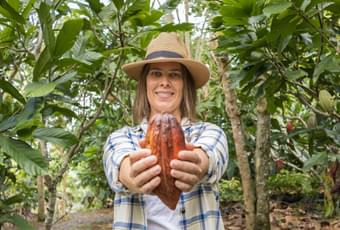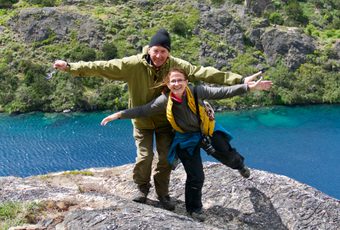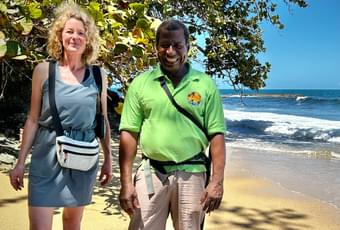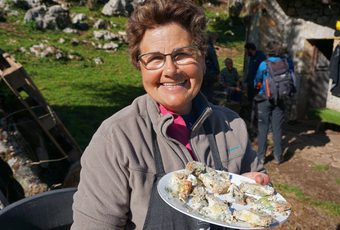Blog
My top 3 unforgettable wildlife encounters in Costa Rica's Corcovado National Park
Home to an astonishing 2.5% of the world’s biodiversity, Corcovado National Park offers a real-life glimpse into Rudyard Kipling’s Jungle Book.
This untouched wilderness, nestled on the remote Osa Peninsula of Costa Rica, pulses with life - from the calls of howler monkeys at dawn to the rustle of the peccaries in the bush.
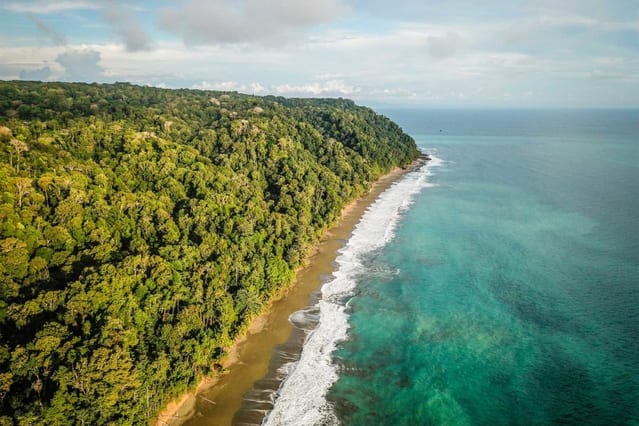
This year, I was delighted to experience a trip to Costa Rica with my Pura colleagues, switching out the office for a tropical adventure! Having previously visited the depths of the Bornean rainforest and done a fair bit of wildlife studies, I was intrigued to see what Corcovado might tick off my species bucket list. Turns out, it was far more than expected!
First impressions of Corcovado National Park
Off the boat from Drake Bay, we were welcomed by a cast of hermit crabs of all shapes and sizes, retreating to their shells as we approached.
With our guide, we headed towards the ranger’s hut to sign ourselves in and get our bags checked for any smuggled food. My breakfast banana got confiscated so as not to disrupt the precious ecosystem. It’s a small but telling gesture of the thoughtful measures taken to minimise human impact for the preservation of Corcovado’s unique flora and fauna.
Carlos, our nature guide, lives locally on the peninsula and has a devoted interest towards educating visitors on the history and nature of the park. His father was a miner in the area, sifting the riverbeds for gold before the activity got banned in the 1970s. He tells us how conservation efforts have transformed the area to use tourism as a sustainable way of protecting the biodiversity and supporting local nature experts.
The passion and enthusiasm from both guides and visitors echo at Sirena Ranger Station, where various groups come to rest in between tours. Outside the station awaits a world that never stops moving.
My most memorable wildlife sightings
From jungle giants to the tiniest leaf-hauliers, Corcovado had a way of making you stop and pay attention. These were the three encounters that stuck with me the most — moments that really brought the forest to life.
1. The Baird’s tapir brings a prehistoric presence to the forest
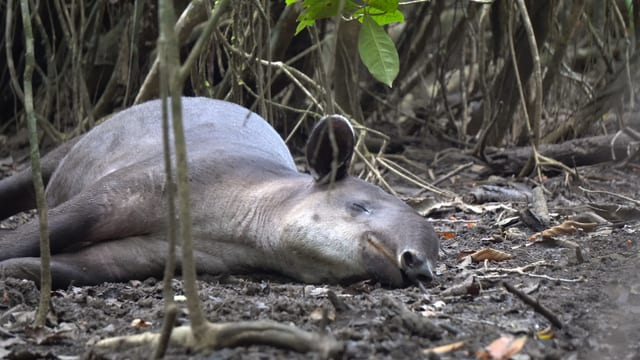
We had no context to this first encounter. Just told to walk slowly, be silent, and switch off any loud camera noises. I scrambled to change the settings and - ‘snap’ - the team glare at me as I pull my foot away from a broken branch. Hushed by our guide, we crept closer to find a group of gentle Tapirs sleeping below the tree, snuffling under the breath of their snaggy snouts.
Considering they are the largest native mammal in Central and South America, tapir lacks any intimidation factor as they snooze unbothered by our presence.
The following day, we spotted a smaller Tapir going for a swampy dip close to the beach. Their flexible snout isn’t just for grabbing leaves - it also works as a snorkel when they're fully submerged. Tapirs are excellent swimmers and will often escape predators or cool off by heading into rivers or even the ocean, using their snouts to breathe while the rest of their body stays underwater.
2. An Anteater trots into view
Once used as a sketchy landing strip, a long grassy corridor now cuts through the rainforest, linking the rangers’ station to the beachy shoreline. The clearing in front of the station is normally used by the kids to kick a ball around, but it became more popular as a passing route for a number of absurd animals.
Early in the day, we’d casually seen a peccary trotting across whom we, quite originally, named ‘Pumbaa’. Despite the difference between species (it being a peccary, not a warthog), the name felt relevant for its pig-like features.
“Look - on the pitch!” Now this one I wasn’t expecting. Lunch at the ranger station was suddenly put on hold as we were called out to the terrace. There it was – a species I knew was out there somewhere but assumed too hard to see. An anteater strolled across the grass whilst everyone gasped in absolute awe. It was one of those completely surreal moments that makes you pause and remember where you are - deep in the wild, coexisting with nature in the most unexpected ways.
3. Leafcutter Ants - The Jungle’s Tiny Farmers

Speaking of Anteaters, they certainly won’t be going hungry with the millions of ants found in Costa Rica.
We first became familiar with the leafcutter ants from our guided tour in Manzanillo Wildlife Refuge on the Caribbean coast. Our local guide would consistently yell out ‘Highway!’ warning us not to step on the crawlers and disrupt their pheromone trails. They were totally fixated to their path and if interrupted, you could sense their panic as they lose their way.
Seeing them again in Corcovado, I began questioning their antics and got totally fascinated by the details. Leafcutter ants work in a complex social structure based on a caste system. Carlos points to a ‘forager’ ant transporting a slice of leaf along the highway. Hitchhiking on top was a smaller ‘quality control’ ant, checking the condition of the cutting to see if it’s worth taking to the nest.
With strict rules in place, these leaves must be in prime condition to be approved by the quality controllers. If approved, it gets taken to the underground chambers specifically for growing fungal crops that feed the colony. The leaves that don’t pass the test are considered a contaminant and are thrown away into huge waste piles that are commonly found around their nesting holes. Highly underestimated, the ants have been farming this fungus for up to 50 million years, forming a strict symbiotic relationship.
It's another surreal look into the wildlife that is often forgotten about on a day-to-day basis, no matter what their size, they play a huge role in our ecosystem. These intricate details about the lives of these animals remind us why we need to protect these areas of high biodiversity and think about how we can travel in a way that supports this.
Why Corcovado National Park is the ultimate wildlife destination in Costa Rica
Considered to have the highest density of biodiversity on Earth, Corcovado is a place where the lines between human and wild blur, where even the smallest creatures demand your attention and respect. Whether it’s the lumbering tapir in its midday nap, an anteater crashing a lunch break, or the miniature world of the leafcutter ants beneath your feet, each encounter offers a reminder of how alive this place truly is.
Further reading: Corcovado vs. Manuel Antonio: A Tale of Two National Parks in Costa Rica

Osa Peninsula Family Adventure
-
$3,200 pp
- 10 days

